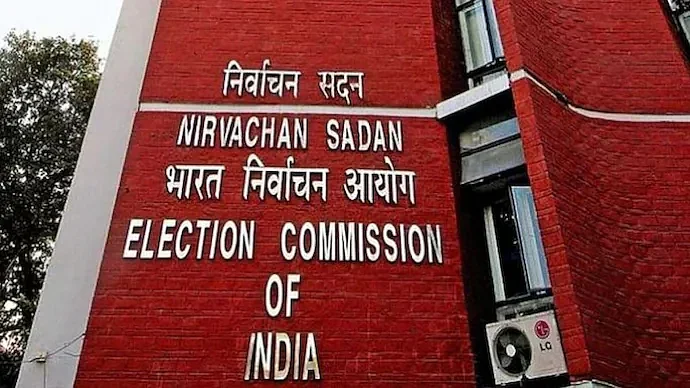COVID-19 was a black swan event and came as a total surprise to the world. Every segment of the society has been affected, central governments, p provincial governments, governments at the local levels, corporates and individuals. The initial expectation of COVID-19 was that it would go away soon but was proven wrong. Based on the experience of the 2008 crisis, countries in the world were very fast to announce large stimulus measures, which has ensured good liquidity in the system. Because of the large stimulus in many countries, in many of the developed countries in the world, the slide in growth was restricted and short-term pain was reduced.
Crisis of this order, weaken the finances of all segments of the society. Despite the traditional streams of finance showing signs of decline, the government has the facility to borrow more to provide finance to the segments which require the funds and liquidity.
In India, the government was very fast to announce the measures to alleviate the pain. More than 80 crore of those who are below the poverty line and the farmers were given free rations and cash in the form of grant/direct transfer. A robust stimulus programme was announced to ensure the viability of MSMEs in India. The measures were also taken to address the issues in sectors like Banking, NBFCs and Realty. In the latest IMF economic forecast, the expectation is that the Indian Economy will contract by 10.3 per cent. According to the IMF and many of the economists/analysts, there is both fiscal and monetary space available to accelerate the growth rate in India. The economic growth will many sectors viable, reduce the NPA in the banking system, create jobs and reduce the need for more concessions from the government.
The liquidity in the banking system is good and there is no demand for funds from various sectors, due to poor capacity utilisation. Bringing down the interest rates further, will affect the profitability of banks, reduce the income of senior citizen investors and reduce the income for those who are depending on interest income. Further, reducing the interest rate will make investments from abroad unattractive.
To make the country recover and be resilient, the estimates are that in the worst-case scenario, Rs 30 trillion of funds may be required by central and state governments to bridge the funding gap and they may have to increase the borrowing up to Rs. 30 trillion. The choice available for the central government to raise funds required from traditional sources is limited. The two choices, which can be considered are, using the physical assets available with government/government companies and large borrowing to kick start the economy.
In this crisis, innovative models of financing projects in the economy through a partnership with various stakeholders will help to reduce the funding through cash and printing more money. The government can collaborate with various stakeholders to kick start economic growth.
India has one of the good models of the PPP projects and Government / Government companies can capitalise on the strengths they have in the form of Land and Building in premier locations. PPP projects are mainly in infrastructure, long gestation and risk-sharing with the private sector. New models could focus on Resource Sharing, Knowledge Sharing and Risk sharing. After the COVID-19, sectors like Health care, Education and Community Development created opportunities for collaboration with the various stakeholders.
The government has already started leasing, operating roads; airports and ports. Now that the concept of InvITs and Reits have taken off in India, it should be possible to raise a lot of resources through these instruments.
AtmaNirbar Bharat
This has created a lot of interest among investors from various countries in the world. One of the main issues is the availability of land with supporting facilities for such projects.
Government and PSUs have a large tract of land and a large number of buildings across the cities. Few cities were developed because of large PSUs and many of these towns are still controlled by the large PSUs. Already an institution like NTPC has decided to allow other companies to operate within its premises. They can use the infrastructure already available on the campus and in the townships. A list could be made of all such facilities in India, within a period of one month. These facilities could be offered to MSMEs and those who are putting up projects under the ANB Programme. The land could be leased, rented or given as equity for developing joint venture projects. This will reduce the project risk for investors.
One of the issues in setting up a project in India is unexpected delays in commissioning the project due to obtaining all the licenses and permissions required. The government can create project vehicles for strategic Industries, obtain all the permissions and sell the fully compliant project vehicle with a good premium. This will be a valuable addition to allotting the bear land to the Project Developer.
Many of the PSUs are not doing well because they are in a business, where the business model has changed and the technology they use is outdated. This has resulted in the sickness of the PSUs. Most of the PSUs can be turned around overnight. The central and state PSUs have land and property in large cities, which have a huge value of their properties (Eg: BSNL, MTNL). By bringing in the best companies in the world in the sectors and creating a JV with them, the companies can be turned around.
In case, they are in industries which are not promising, capitalisation plan for the land and buildings could be formulated. Once the capitalisation is done, the government can ensure the debt repayment, which will reduce the NPAs of bans and take the residual money in the form of dividends.
Public-Private Partnership
Within the public sector, the range of performance of companies is varying by a wide margin. But all of them have good recruitment training process. They have people with good capabilities. What some of them lack is market orientation, good pricing strategies and good investor relationship practices in the case of companies which are doing well. The best practices from best companies in PSU’s, the private companies in the concerned sector can be gathered, assimilated and disseminated to PSUs. Since many of them are sick, a turn around plan can be developed for each sick PSU. Similarly, a forum can be created for sharing best practices of central PSUs with other PSUs/state PSUs. A leader in a sector can help the companies in the same sector to improve their policies, systems and procedures. In one of the large business groups in India, a similar concept was implemented in the year 2001 and after that many of the companies in the group have started doing very well.
Public Charity Partnership
Temples, mosques, churches and other leading religious institutions in India has a very large fund base and manages a large tract of land and buildings. They also have very high revenue, many times in hundreds of crores a year. They also manage Schools, Colleges, Townships,
Hospitals and other social infrastructure. After the Pandemic, the importance of social infrastructure has become very important. Some of these institutions have the best facilities and best practices. They can be roped in to improve social infrastructure development in the areas where they are operating. A partnership model could be developed with the institutions.
Public Community Partnership
India has a very large programme for unemployed, Mahatma Gandhi National Rural Employment Guarantee programme. A very large budget is allotted for this programme, every year.
This year due to COVID-19, the additional amount has been allotted for this programme. There is a programme for capacity building of Panchayati raj institutions. The capacity building for Panchayats requires strengthening. They should be able to identify projects, which will be more beneficial than what is being done now. Focussing on projects, creating value for the village will go a big way in creating productive assets. The projects will be like building schools, dispensaries, community centre. The focus of this programme going forward could be on social infrastructure apart from physical infrastructure.
Public MFI Partnership
India is one of the largest recipients of loans from many of the MFIs. They continue to support India’s Initiatives and bullish on India’s long term Economic Growth. Now all of them encourage projects which meet ESG norms. This is in synch with our national objective of environmental friendly Economic growth. The focus for future engagement could be on Digital technology penetration, broadband penetration, Jobs creation and poverty alleviation apart from the conventional projects.
Public Foreign Financial Institution Partnership
India has become very attractive for long term funds around the world. Especially, after the stimulus by many of the developed countries in the world, the low yielding funds in the world have increased. Everybody is looking for investments, where the yields will be enough for them to meet their investment objectives. JICA, JBIC from Japan and many of the large Canadian Pension funds have invested large funds in India. Many of the large trading partners also have made good investments in India and they want to make more investments in India. Many of them, who are still not in India, not having a manufacturing base are waiting in the wings. After the new policies for manufacturing in India, there is an increased interest in India from multinationals around the world. Already many new manufacturing projects were announced by large multinationals. Many more want to come and set up shop in India.
COVID-19 and geopolitics have brought a great opportunity for India for fulfilling our ambition of taking the manufacturing GDP to 25 per cent. Through new models of the collaboration of Government with various stakeholders, India’s infrastructure development targets could be achieved and India could emerge as the destination of Global manufacturing.
R Kannan is an expert in finance and strategy with more than 35 years’ experience. He has been associated with TCS, Hinduja Group, ICICI Bank, among others.









